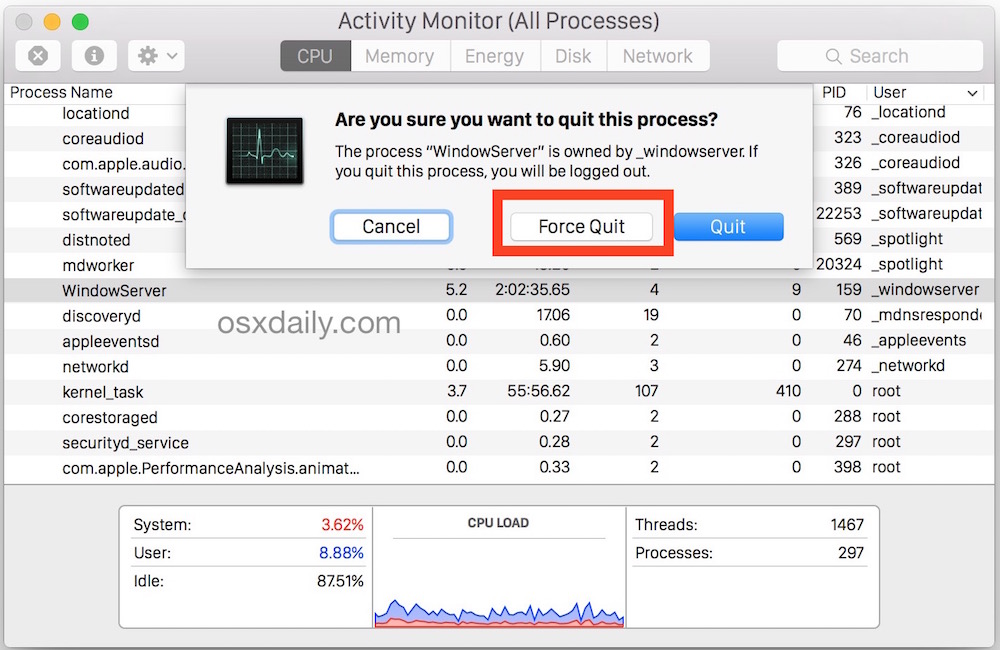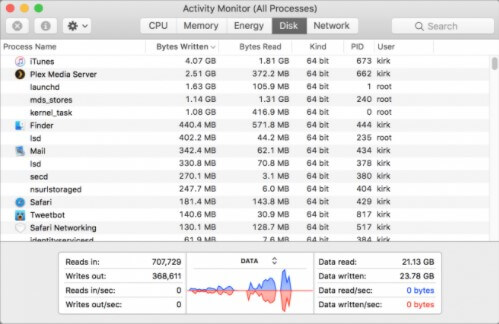

The bottom of the window shows information about your overall energy use. Preventing Sleep: Whether this app is preventing your Mac from going to sleep. This column only appears on Mac computers with one or more graphics cards. Graphics Card: Whether the app requires a high performance graphics card. This column only appears on Mac laptops.Īpp Nap: Whether App Nap is active for this app. The energy use of individual apps and their processes is displayed in the upper part of the Activity Monitor window.Įnergy Impact: A relative measure of the current energy consumption of the app (lower is better).ġ2 hr Power: The average energy impact of the app in the last 12 hours, or since the Mac computer started (lower is better). To display more columns, choose View > Columns, then choose the columns you want to show. In the Activity Monitor app on your Mac, click Energy (or use the Touch Bar). Here we introduce you to a great Activity Monitor alternative, Mac Cleaner to help you better optimize your Mac. You can rely on them to improve your Mac’s performance. With Activity Monitor, you can check the current statuses of your Mac, such as CPU, Memory, Energy, Disk, and Network. Better Way to Check Mac Status and Improve Its Performance If your Mac has the content caching service, you will see a Cache tab when you enter Activity Monitor.

When your Mac is running slowly, you can open Activity Monitor, click on the Memory tab to locate the most RAM-hungry apps, and then close them to speed up your Mac.Īfter you get to Activity Monitor on mac, you can also click Energy, Disk, and Network to check related information. When you choose Memory, you can view how much RAM your Mac applications are using. When an app is not running correctly on your Mac, it will be shown in red with the Not Responding words. Under the CPU tab, you are allowed to locate the troublesome app or process and force it to quit. Here Activity Monitor displays % CPU, CPU Time, % GPU, GPU Time, PID, and User. You can choose each of the five tabs inside Activity Monitor to keep track of certain aspects of your Mac.Ĭlick the CPU tab, you can check how your Mac’s processors are working. As mentioned above, it is mainly designed with 5 key features. With the 3 methods above, you can handily access and open the Mac task manager. When you get there, you will see the Activity Monitor app. To find Activity Monitor on Mac, you should go to the Other folder. There are many apps listed on the Launchpad. You can also try opening the Mac Activity Monitor in the Launchpad shortcut on your Dock. Get to Activity Monitor on Mac from Launchpad shortcut You can press the Command + Space keys to arise the Spotlight, type in the Activity Monitor, and then press Return when it appears at the top of the list. This does the hard work of actually indexing your files to make that quick searching possible. The second, mdworker, stands for metadata server worker. This process manages the index used to give you quick search results. The first, mds, stands for metadata server. When you want to check Activity Monitor on a Mac, you can also use Spotlight to quickly locate it. The two processes are part of Spotlight, the macOS search tool. Then you will see 5 tabs and a list of entries.įind Activity Monitor on Mac using Spotlight You can double-click on its app icon to open it. Step 2 In the Utilities folder, you can easily access the Activity Monitor. After you open the Finder app, you can also click on the top Go menu and then select the Applications option from its dropdown. Then click Applications in the left sidebar. Step 1 Click the Finder app in your Mac Dock to open it. Open Activity Monitor on Mac through Finder To access the Mac resource monitor, you can follow the steps below. There are several ways to open and interact with the Activity Monitor on your Mac. Where to Find and Open Activity Monitor on a Mac Best Activity Monitor Alternative to Optimize Mac Whether you want to check the real-time CPU, network, disk status, find out how much energy your Mac is using, or close unresponsive apps and processes, you can go to Mac Activity Monitor to do that.
#Activity monitor mac os how to#
This post covers how to get to, open, and use Activity Monitor on Mac. When your Mac or macOS is acting sluggish or simply not responding, you can get to Activity Monitor on Mac and find all sorts of helpful information to troubleshoot it.

It can show you many current Mac statuses including CPU, network, processes, disk activity, memory usage, and more.
#Activity monitor mac os windows#
Similar to the Windows Task Manager, Activity Monitor on Mac allows you to view various program activities and manage resources. How to Access and Use Activity Monitor on Your Mac


 0 kommentar(er)
0 kommentar(er)
